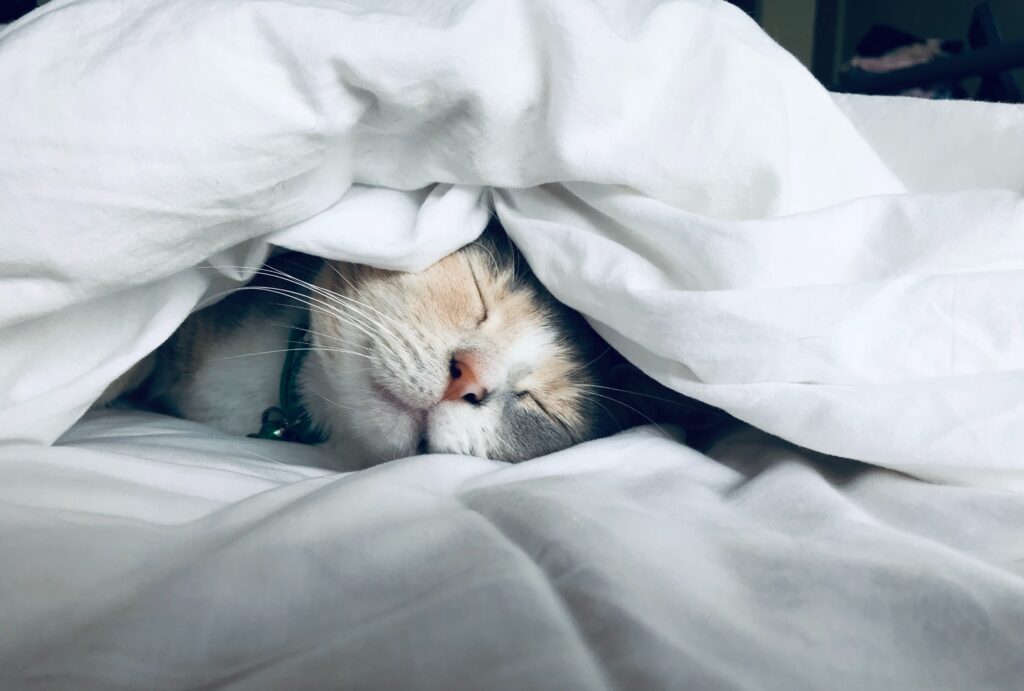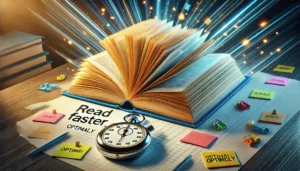x min read

Introduction
We’ve all been there – facing a looming exam and feeling the pressure to cram a semester’s worth of material into a few short hours.
It sucks.
You feel like you’re bound to fail and that there is no hope but to just take the F and accept failure.
But, I’m here to help with that.
While cramming is not the ideal study method, sometimes it’s the only option.
Today’s blog will review a short guide on everything you need to know to cram successfully and a few tips that you’ve probably never heard of to supercharge your learning and cram effectively.
How to Cram For an Exam – Full (but short) Guide
1. Stop Overthinking
I know it’ll be hard to not overthink. But, the faster you accept that there’s nothing you can do but study now and make the most of your time now is important.
You can’t reverse time. If it was that easy, then everyone would be doing it. I suggest just giving yourself 2-5 minutes (the less, the better) to close your eyes and just stop thinking about anything. Just breath. That’s all you need to do.
2. Plan out and Determine Your Sleep Quality
Firstly, you need to quickly plan out what you’ll study in order to get some decent grade on that test at least. What exactly are you going to study with? Will you use flashcards? A study guide? Digital resources?
Next, you need to determine how much sleep you’ll get for the night (if it’s your final day before the exam). Do you plan to get a lot, or a little?
Of course, science will say that a large quantity of sleep is needed to stay awake, maximize your productivity, and increase your efficiency; which is all true, but that doesn’t matter here. What matters is the amount of time you get to have in order to study for that test.
What determines the amount of sleep you should get
In my opinion, it all depends on the importance of the test and your comfortability with the content in it. If you are relatively comfortable with the material (even if it isn’t all of it), and the test isn’t that important, then you should seriously prioritize your sleep, because you won’t get much out of studying for a few more hours when you already know a majority.
BUT, if the test is highly important and you aren’t very comfortable with the material, then I suggest getting less sleep to study more of the material. I know, I know, it may contradict a lot of the information you see online. But, if I don’t know what a problem on a test is even talking about, how will extra sleep benefit me there? It won’t.

Sleep Images – Unsplash.com
3. Identify Key Topics:
- Quickly review your syllabus, class notes, and any study guides provided.
- Identify key topics likely to appear on the test.
- Prioritize based on importance and your understanding of each topic.
3.5. Don’t Ignore Specific Topics
Back when I took AP World History: Modern, I had a specific strategy for studying that made it easy to study. All I did was focus on the bigger ideas and picture of things and search for the specific details and examples within that scope of the general idea.
For example, if I need to provide an example of how silver impacted the local and larger economies, I can take nations like the Spanish or Portuguese and use them as prime, yet specific examples of that general concept.
Of course, it won’t suit everything, but it’s just a tip.
4. Choosing a Learning Strategy:
Now that you’ve planned out what you’ll do and what’s important, you now need to determine how you’ll actually retain the information in the material.
There are a bunch of strategies to choose from, so I suggest going to Google, YouTube, or ChatGPT and asking for a few learning strategies according to your learning type.
Aside from that, here are two extra tips to consider:
- Engage actively with the material to enhance comprehension and retention.
- Teach the concepts to an imaginary audience or study group.

5. Minimizing Your Breaks and Entering a Flow State
Remember, there isn’t much time before you need to take that test of yours. So, the best thing you can do is enter a flow state in as little time as possible and make the most out of your concentration so that the last thing you need is someone calling you at that exact moment.
I don’t have a full post on this just yet, but when it’s released, be ready. It’ll be a big one. For now, you can view a brief description of it and my procedure in this post here.
6. Self-Testing:
Lastly, and probably most importantly, test yourself. It helps greatly with memorization and with the absorption of information, which is exactly what you need.
How to Cram For an Exam: Tips You’ve Never Heard Of
- Don’t Know what This is Called: This strategy involves reading someone (or viewing something; e.g. a video) and then briefly summarizing what you’ve just consumed every now and then. This helps train your short-term memory, and build your brain’s awareness of a piece of information. It trains it to remember something, even if it isn’t important.
- Symbolize it: When making an attempt to remember something, compile it into an idea or memorable mental image of some sort so that when you’re in a situation that you need to fetch that information, it’s readily accessible. For example, if I needed to remember the year in which Cristopher Columbus sailed, I can remember the rhyme “Columbus sailed the ocean blue in 1492!”.
- Create Your Own Full Test: When you have a bunch of notes and any sort of information on a topic, and can access it digitally, I suggest compiling it into a text file of some sort and inputting it into ChatGPT (a great AI tool if you haven’t heard of it already) and asking it to form questions using only that information or through information on the internet too if you’d prefer that.
- Kinesthetic Learning: This is a learning style that is the most difficult to actually fulfill, but the rewards are worth it. It involves putting yourself inside of a real-life situation of whatever you’re learning. For example, if you want to learn more about animal and plant cells, you may too be the type of person to buy a microscope and analyze individual cells of those organisms to see how they behave, what they’re like, and things of that sense.
- Play Music: Music that’s at the right volume is great for studying. In my opinion, I find it harder to get work done when there’s no music playing. My brain doesn’t perform the same. Of course, not everyone is the same. For that reason, you need to assess the way in which you learn so that you can determine what’s most suitful for you.
- Stare at a Wall: As crazy as this may seem, it works. All you need to do is stare at nothing, maybe that’d be a wall, a door, or the ceiling, and keep staring for 1-2 minutes. Don’t stop staring until you’re done. This trains your brain to mentally prepare itself for more anti-dopamine activities and gets it into a study-efficient state.
- Avoid Phone Usage at all Costs: Once you space out and get your brain onto a dopamine-inducing activity, it’ll be asking for plenty more in no time. That’s actually the reason why a majority of people today can’t get anything done. It’s all because of poor focus, as a result of high phone usage.

Phone Images – Unsplash.com
Conclusion
Now, you know the basics and a few extra tips to help you along the way as you cram. If you ever have the chance to study early for a test, please do so. It’ll save you so much of your time and sanity.
You can expect a few more posts coming soon in regards to cramming content in the next coming weeks too.



